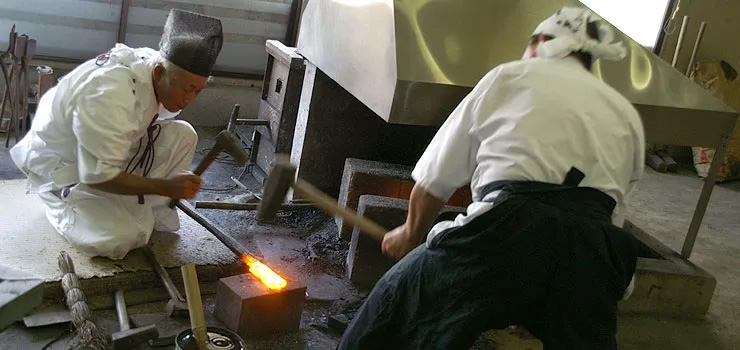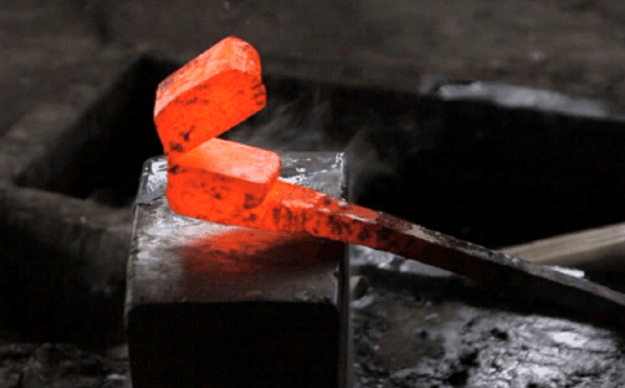The folding process of the japanese sword

The katana is undoubtedly one of the most prolific and well-known swords in the world. From Asia to North America, countless people have collected this iconic sword or used it in martial arts based on swordsmanship. This is partly because of the high-quality blades of the katana. It is made of high carbon steel and differential heat treatment, strong and flexible, and able to bend.
In order to obtain a strong blade, Japanese swordsmiths fold the blade of the japanese sword dozens of times. Admittedly, it is a common myth that swordsmen fold katana "thousands of times", but this is not necessarily true. Although different swordsmiths have their own unique techniques, most people fold the samurai sword about 15 to 30 times. This is enough to achieve the desired effect, and each fold improves the performance of the blade.

Cutlers fold the blade while the blade is still hot. After heating the metal (usually iron, carbon and alloy), the swordsman will use a small hammer to hammer the blade in half, folding it horizontally, and then he will use a larger hammer to hammer the blade in half lengthwise. The swordsmith will continue this process until the desired effect is achieved. In most cases, Japanese swordsmen fold the blade of a samurai sword no more than 30 times.
So, why would Japanese swordsmen find it necessary to fold the blade of a samurai sword? Folding provides several benefits, one of which is metal purification. Iron sand, steel, and other metals used to make traditional Japanese swords are not without impurities. On the contrary, they contain small and trace amounts of other metals and minerals. If left unchecked, these impurities will adversely affect the quality of the blade of the sword. To prevent this from happening, Japanese knifemakers fold the blade multiple times—up to 30 times—in order to clean the blade.
Folding also compresses the metal together, making it stronger. Every time the blade is folded, it gains strength. Over time, this swordmaker strategy can turn a fragile and fragile blade into a shatter-resistant blade suitable for katana.

Today, Japanese swordsmiths continue to make katana and other traditional swords by folding blades. This is one of the reasons why traditional Japanese swords are so popular among collectors and martial arts enthusiasts. Although there are newer methods to produce swords, such as factory machines, they cannot provide the same level of quality as traditional Japanese swordsmanship strategies such as folding blades.
Discover the many attractive options available for Katana swords and custom swords.
Want a unique sword? Feel free to contact us:
Phone: 086 13739276006
Email: [email protected]
Website: www.hanbonforge.com
Custom Sword Page: www.hanbonforge.com/CUSTOM-SWORDS/Custom-Your-Own-Swords

Leave a Comment